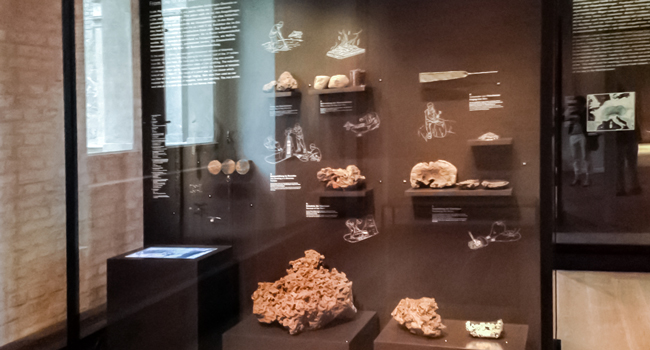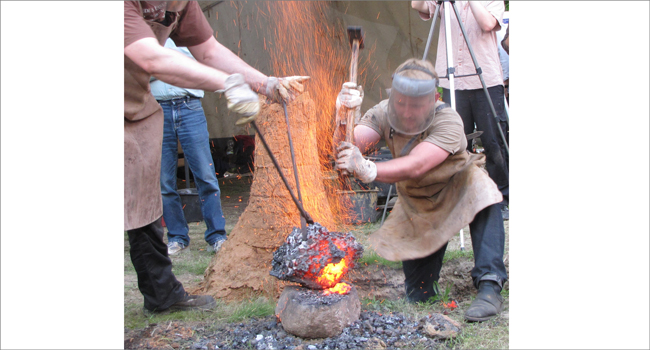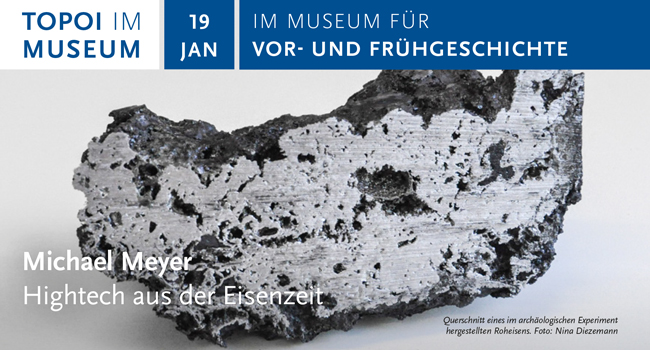The revision and new conception of the prehistoric exhibition at the Museum für Vor- und Frühgeschichte in Berlin affected, among other things, the museum’s Pre-Roman Iron Age division, featuring artifacts from ancient Europe and Eurasia. In setting up the new exhibition at “Neues Museum”, the focus was not only on portraying Iron Age cultural groups, but also and especially on the subject of iron and iron smelting as a new raw material and a new technology.
Research
Three central themes were explored in close cooperation with the research conducted by research group (A-5) Iron as a raw material:
1) “Display windows” showcasing current Topoi research were integrated into the museum exhibition; presentational concepts were developed for these windows in conjunction with individual research group projects. The exhibition depicts the ways in which the new iron technology spread throughout the region, as well as the cultural upheaval that resulted, and the inception and development of smelting technology.
2) Additionally, the group conducted a fundamental review and evaluation of museum holdings that provide evidence of early iron usage or processing. Relevant material was compared with current research results – especially those obtained from Teltow region and integrated into scientific research concerning the origins and smelting of iron.
3) From the museum’s point of view, the aspects of this theme which concern the history of research constitute a central aspect of the preparatory process. Thus, the group investigated what changes can be discerned in museum treatments of the subject of iron, e.g. as a new, epoch-defining material, or from a technological point of view. When did iron first and first iron objects gain the attention of museums? In particular, the group evaluated Berlin museum archival holdings of relevance to these issues, most likely supplemented by older collections with long-standing traditions.
The Iron Age section of the newly designed exhibition on prehistory and early history at the Neues Museum Berlin now includes archaeological finds from Glienick (Brandenburg, Germany), that correspond to various stages in the iron production process, from mining ore to smelting in a bloomery to forging bar iron. The exhibition also presents the results of iron smelting experiments conducted in a bloomery of the type discovered in Glienick. This includes a lump of iron created with the support of the Excellence Cluster Topoi during the Event “Lange Nacht der Wissenschaften”.
Additionally, the research project was presented within the series “Topoi im Museum“
Further Information



